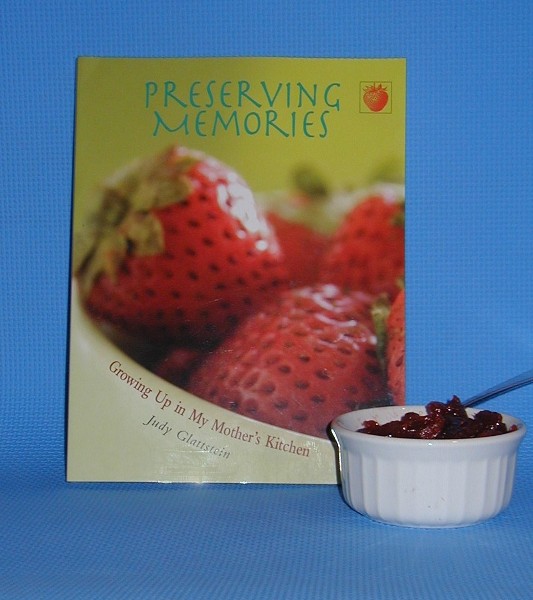
"Something for you." Paul said, as he pulled two days accumulated mail from the box. Inside a plain brown padded mailing envelope was my author's advance copy of Preserving Memories, my new book. A departure from my previous eight books, which are about gardening, this one is part cookbook. It has techniques and recipes for making a range of sweet preserves, from fruit butters to jams, conserves to marmalades, and jellies both sweet and savory from summer's peaches, autumn's apples, winter's oranges and lemons. There's information about using native fruits such as cranberries and blueberries and grapes, and others available for foraging. As well, there's some asides on the history of sugar, background on marmalade, even the development of canning jars. It's also part memoir, with anecdotes and memories of making sweet preserves, a family affair for me, my mother, my sister, my daughter, and various friends and acquaintances. If the strawberries on the cover look good enough to eat, trust me, there are lots of suggestions between these covers for what to do with strawberries and a whole lot more.

I've always wanted a treehouse. A friend in Ithaca, New York had a gracious one in the garden's big old apple tree, where she and her husband would retire for pre-dinner cocktails in the evening. There's even a perfect set-up for one here at BelleWood Gardens, with a trio of sizeable sycamores that would make a fine support. If not a treehouse, an unroofed platform. Alas, carpentry is not my forte. And the "to do" list never seems to be growing noticeably shorter as items are added more quickly than completed. Embarrassingly, I must even admit to bags of bulbs in the garage, awaiting their interment, I mean planting.
So. We joined a houseful of relatives for Thanksgiving, 31 or 32 of us. I'm now in the matriarchal generation, with two generations ascending the familial ladder behind me, the youngest of whom was a mere 6 months of age. It was a veritable feast, followed by an equally lavish dessert board. Lots of good conversation catching up on what's happening and even a modicum of watching football on TV by the testosterone moiety. Then off to our daughter's house where the immediate family (a mere 11 in number) would gather until Saturday.

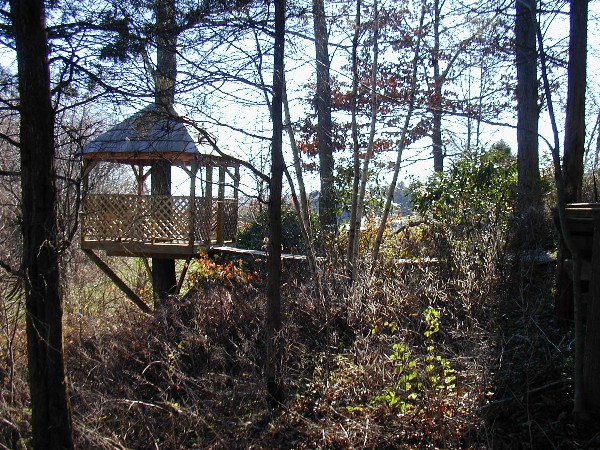

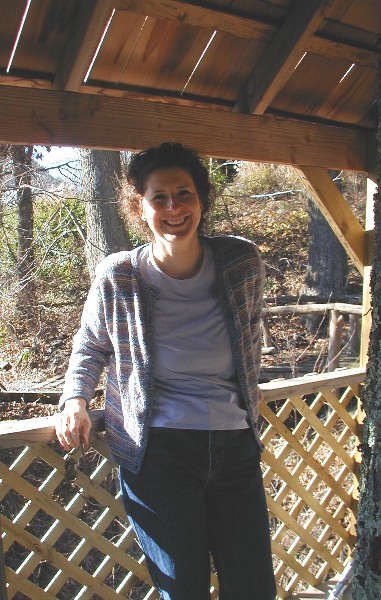
While today the term most often refers to a race or walk taking place on Thanksgiving Day, in the early 1900s the turkey trot, a bouncy, jazzy, face-to-face dance, was considered demoralizing and was banned at public functions. It was done to fast ragtime music with the dancers making four sideways hopping steps, their feet wide apart, hopping first on one leg, then the other, with a characteristic rise on the ball of the foot followed by a drop upon the heel. Scissor-like flicks of the feet and fast trotting actions with abrupt stops embellished the dance.
Ben Franklin, in a letter to his daughter written in 1784, decried the eagle as bird of choice on our young country's Great Seal, writing "For in truth, the turkey is in comparison a much more respectable bird, and withal a true original native of America. Eagles have been found in all countries, but the turkey was peculiar to ours; the first of the species seen in Europe, being brought to France by the Jesuits from Canada, and served up at the wedding table of Charles the Ninth. He is, besides (though a little vain and silly, it is true, but not the worse emblem for that) a bird of courage, and would not hesitate to attack a grenadier of the British guards, who should presume to invade his farmyard with a red coat on."
It's begun. The run-up to Christmas has started. Not with the tinsel on lamp posts, or frenzied advertising on television. It begins with imagination and family events, wide-eyed toddlers and smiling parents. The holiday train show at the New York Botanical Garden opened today, and trains will be running round the tracks until January 7, 2007. Holiday hours from November 18 through January 7 are 10 a.m. to 6 p.m. Tuesday through Sunday. The Botanical Garden is closed on Mondays, Thanksgiving Day and Christmas Day, and closes at 3 p.m. on December 8 and 24. Tickets are $18 for adults, $16 for seniors and students, $5 for children.
These trains, you see (and you should - go there and see for yourself, that is) are not the little trains running in a perfect circle around the base of a Christmas tree in somebody's living room. They're "Lehmann Gross Bahn" G-scale trains, four times larger than conventional HO-scale trains and suitable for both indoor and outdoor garden railroading. And outdoors means just that. You can run the trains in sun or rain, even in the snow. That's how I first saw the holiday train show. The conservatory was being renovated and the show was set up outdoors, on the lawn off to the side of the fountain in front of the museum building. Cold. Snow on the ground, our breath was steaming, temperatures low enough that there were icicles at the edge of the display's waterfall. Long since restored, the conservatory provides a spacious setting for this popular holiday treat.
What makes this event so special, a fabulous wonderland, is that all the buildings are created from bits and pieces of plants: scales from pinecones, acorn caps, leaves, seeds, pods, twigs and branches, bits of bark, hollow logs, mushrooms, and more. Not strewn around the landscape, but used to create buildings. And not just any buildings, but those of New York City, some familiar and others less well-known that are still extant, others that once were but are no longer standing. The closer you look, the more fabulous the detail. It was 1992 when Paul Busse and his Applied Imagination crew first came to the New York Botanical Garden and created a holiday train show. By now there are well over a 140 buildings, from brownstones to Yankee Stadium, the Guggenheim to the public library, the Chrysler building to the Statue of Liberty, and Rockefeller Center. There's 1,200 feet of track to fit in around permanent plantings, for-the-show plantings and ponds and waterfalls, trains in the air over trestles and aerial tracks. It takes 20 people better than a week, about 10 days, to put everything together and get the trains running on time.
Something for everyone: there's the magical qualities of the buildings, surely designed by fairies tired of sliding down moonbeams and looking for a place to stay. There's engineering - would you have thought snippets of wisteria vines could create a bridge towering well over your head and sturdy enough for trains? Children are young enough expect the world to be magical, to fascinate. We grownups are jaded and blase. Until we step into the magic of the garden railroad holiday train show.
Come on. All aboard.
The box from Bell Bates arrived yesterday. Part of autumn's ritual - picking an auspicious-feeling day in November and calling the store at 97 Reade Street in New York City, to ask if the candied fruit is in. Place my order for candied lemon peel and orange peel, pineapple rings, red cherries, and citron.
I was at the New York Botanical Garden today, teaching GAR164, Traditions and Gardens of Holland. It was an interesting group of students. One woman lives in Nyack and her home, though built in the 1930s, was built in the Dutch style reminiscent of earlier settlers. Another is of Dutch ancestry. Yet a third actually is Dutch. My focus for the class begins with the geography and climate, then moving on to the historical background of this nation of sea farers, merchants, burghers and royalty, with excursions into tulipomania, contemporary bulb production, and more. As a special treat - the timing being right - we went over to the Tulip Walk where a crew was hard at work planting the bulbs which will create the extravagantly colorful display next spring.
I'll have to come back next spring, to see how it all turns out.
Here's a glimpse of the catalog for the Buried Treasures exhibition at the LuEsther T. Mertz Library of New York Botanical Garden. It was a year ago, in November 2005, that I began working on this project: developing case themes and choosing items to illustrate both the superb material housed in the Library's collection and also offer visitors the opportunity to learn more about bulbs than they had previously known. There's an elegant catalog accompanying the exhibition
Have I captured your attention? Then come visit the exhibition, which is open through 7 January 2007. Bulb aficionados unable to visit the New York Botanical Garden may request a copy of the catalog. E-mail Stephen Sinon, research librarian. Mention BelleWood Gardens, provide your name and mailing address, and request a Buried Treasures catalog. But really, if you can arrange it, visiting the exhibition is the better option.
What's all this? NARGS is the acronym for North American Rock Garden Society. Their focus is the study and cultivation of alpine and saxicole plants, those growing high in the mountains above the tree line, or those from lower elevations that prefer to grow in rocky sites. Often there is an additional focus on native plants. The Watnong chapter is located in New Jersey, with many of the ten meetings each year held at the Frelinghuysen Arboretum in Morristown.
The November meeting featured an informative lecture about native azaleas by Connie Kallas, illustrated with images of the many species, hybrids, and cultivars that he grows in his garden. Following which we had our luncheon. It's a well-known fact that gardeners enjoy their food, and this group is no different. Benjamin Fay, a member and culinary wizard extraordinaire provided her special expertise, ran the kitchen at the Frelinghuysen, provided the entree and stage managed the side dishes and desserts provided by other members. (I brought a fennel, carrot, and onion confit.) Consider it a rehearsal for Thanksgiving. All that was missing was cranberry relish.
It's a great group of knowledgeable, friendly people, with interesting meetings that range from lectures to garden visits, and stupendous plant sale (material has already been ordered - and the sale isn't until next spring!) Interested? For more information, contact the program chairman Pam Wilson. Convinced you'd like to join? Watnong Chapter dues are a modest $10 per calender year for single membership, $15 a year for families. Contact membership chairman Dr. Robert Burns.
Ginkgo is the only tree I know that does it all at once - branches swathed with golden fans one day, and a pool of yellow on the ground the next one. Black walnuts drop them early, large ones from a sycamore clatter around, Norway maples congeal into an imitation of roofing felt. Even "evergreen" is a relative term, as white pines surround themselves with straw gold needles, and the larch turns foxy red and drops them all. Deciduous evergreen. Now that's an oxymoron for you. Beeches and oaks hang on to their leaves the longest, sometimes beyond new year.
The driveway gets priority. It's steep, and there's a curve at the top right by my toolshed. When it's covered with leaves and they get wet with rain it's a skiddy, slippery, hazardous situation. Too much to rake up, bundle on a tarp, and haul off.
Debris breaks down best if the pieces are small (more edges for the microorganisms to work on). And a blend of browns = carbonaceous material such as fallen leaves, and greens = nitrogenous material such as grass clippings and weeds is better than either type on its own. Unfortunately my garden provides mostly greens and little brown in summertime, mostly browns and little green in fall. I used to use a single element fertilizer such as dried blood or cottonseed meal. But have you noticed how expensive organic fertilizers have become, now that everyone is hopping on the bandwagon? I was looking at a bag of alfalfa meal fertilizer and had a veritable "Ah-ha!" moment.
And only a little green is needed for masses of brown. So I cheerily wheel the cart and buckets of shredded leaves down the driveway, bring the empties back up. repeat. repeat again. Trudging uphill three or four times is about my limit, and besides, it's a couple hours worth of raking (me) and shredding (Paul.) On the last trip downhill I bring a small pail of alfalfa pellets and scatter by the handful over the leaves. I should also toss some finished compost over the heap of shredded leaves to activate the process of decomposition. Finished compost is just filled with micro-herds of invisible organisms ready to go to work. I also rescue earthworms I find out on the driveway and toss them into the compost heap. Mindlessly, they edge out of the soil and onto the asphalt, then don't know where to go, an endless, deadly journey for an earthworm.
It's time. There have been a few nighttime frosts, dropping down into the high 20s Fahrenheit. Still warming nicely in the sunny hours. But still, it's time. The lush green summertime growth of Musa basjoo
Bananas are not a tree, or even a shrub. Lacking the woody framework that supports those categories of plants, a banana is herbaceous. Accordingly, its soft tissues are easily hacked through in seconds with a pruning saw. Such was the hydraulic pressure though, that the first cut into the stout stem released a fine liquid spray, squirting out in a flat plane.
The next step is to protect the thick underground corm from voles, those pestilential rodents that spend the winter secure under snow and chowing down on many bulbs, Japanese forest grass and yes, unprotected bananas remaining in the garden. Previously I've used a scattering of bulb saver. Couldn't find the can this year, so instead and with some reluctance, I used moth balls, the pungent, naphtha-scented ones. Not good for soil-dwelling microorganisms but hey, they're in a confined area and for a specific purpose.
The next step is to collect a lot of pine needles. Important, I've learned, to rake up three to four times what I think I'll need. And I'll need every bit of what's collected from under the neighbors' trees. They are used as insulating filler material around the cut-back banana culms and their cover. Mostly I use upside-down plastic garbage cans with their bottom cut out. This allows me to upend the can and then fill with pine needles. It's a much more efficient technique than filling an intact can and attempting to invert it. Air is the actual insulation material. Equally, I don't want to fill the cans so loosely that the needles settle over winter and allow the upper portion of the remaining stem to be more exposed.
Jerry, who has an investigative mind set, more space, and more bananas than do I, will be taking a three-pronged approach this winter. Some bananas were dug, potted, and brought into sure-to-remain-warmer conditions. others were dug and brought under cover, but not potted. And the third group will remain in situ, with oodles of the leaves from autumn clean-up heaped about their bases. It will be interesting to see what differences there will be - not merely winter survivability, but how each group grows away next summer.
There's a frost on the way. It comes, sooner or later, to this part of the country, even on so sheltered a site as Wave Hill. Buffered as it is by the Hudson River and lay of the land, they've had more (summer)time than did I. But now it's time to move, move more, move more bigger stuff, and move fast.
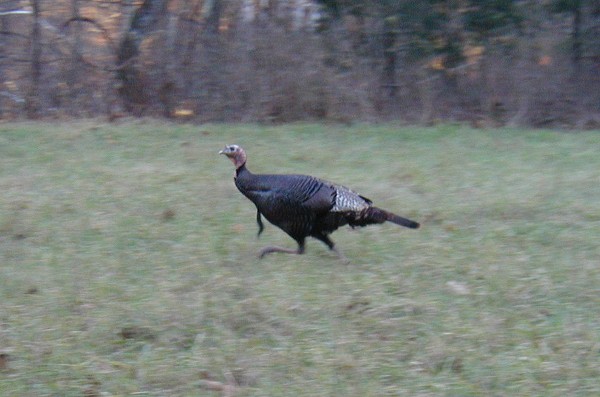
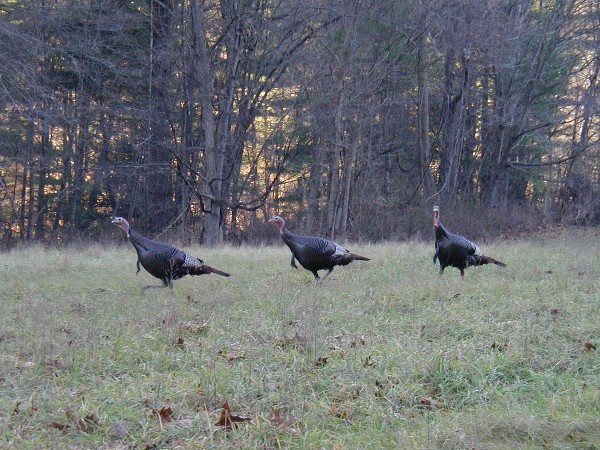


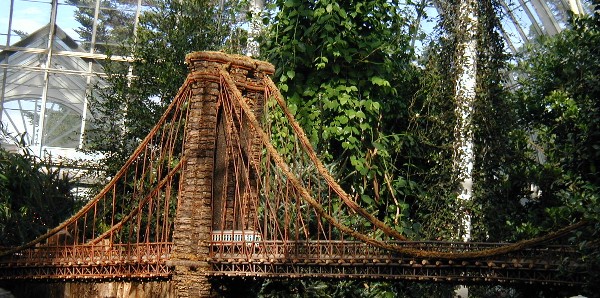
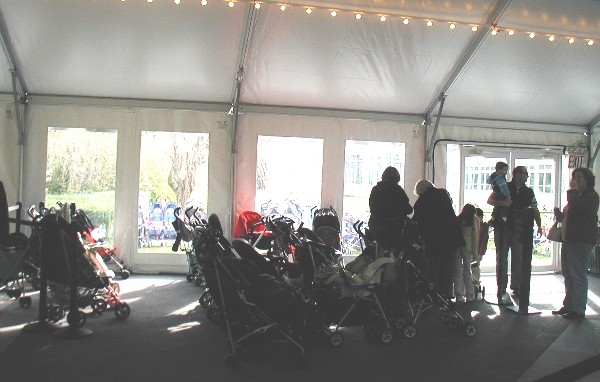
One of it's functions is to provide parking for the numerous baby strollers.
Not enough, however, as within an hour the strollers were massing on the lawn adjacent to the tent.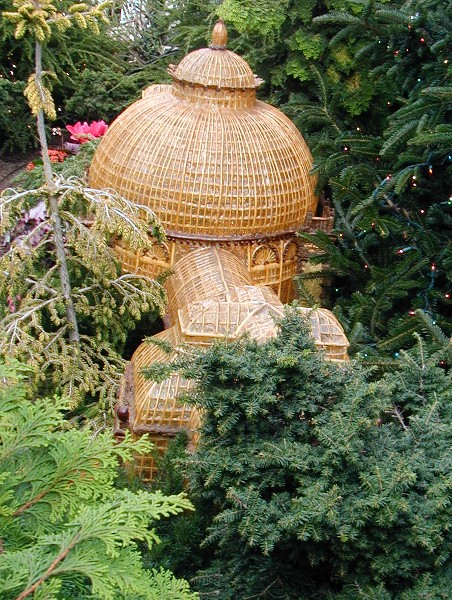
Fractal symmetry not of side-by-side left and right, but rather like tree to branch, larger and smaller.
and delicate little mansard roof protecting the lower windows. Let's take a closer look.
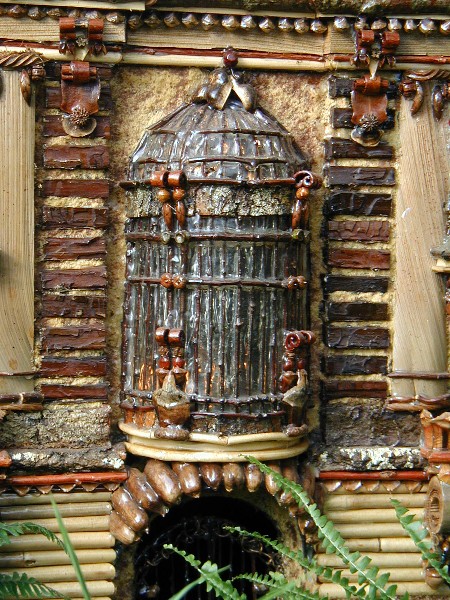
"Glass" filling the twig-framed casements of these windows (and the conservatory model too) is poured from casting resin.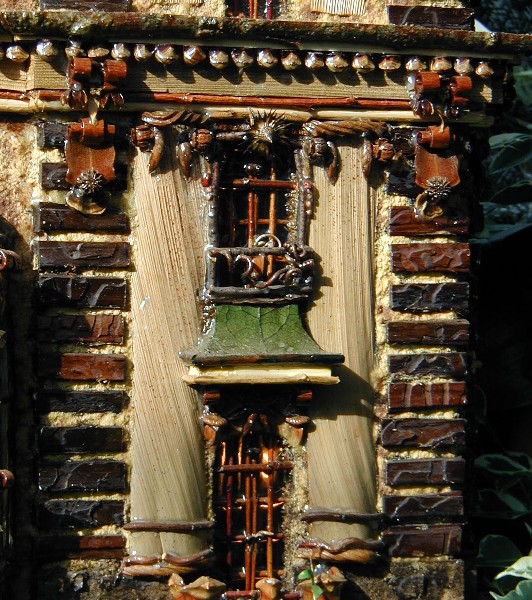
a vital finishing touch when you consider the effort that goes into the construction - not to mention the talent! 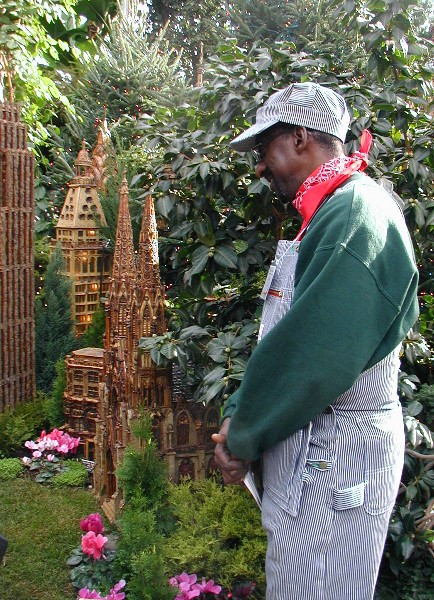
Today, he's an engineer, with a smiling greeting for the children and their parents.
He, and the other "engineers" are here to keep an eye on things and answer questions.

They should soak for at least 24 hours, and twice that is not too long.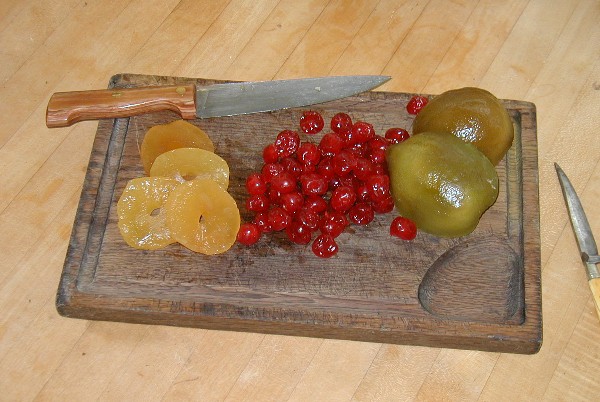
but not the sticky rounds of candied pineapple, glistening red cherries, and bulky, fragrant citron.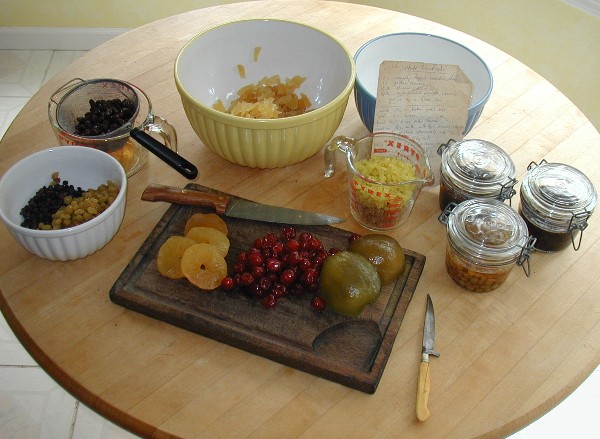

Infused with brandy and re-baptized several times before it reaches perfection.
Thinly sliced, redolent with spirit and rich in flavor, it is a fitting conclusion to a holiday repast.

their plain brown tunics providing not a clue to the green and salmon pink petals next spring's flowers will display.
Soil flies by the shovelful into the truck. Fertilizer will be added later.
The white tunics indicate these will have either white or yellow flowers and indeed,
they are 'City of Haarlem', which has soft primrose yellow flowers.
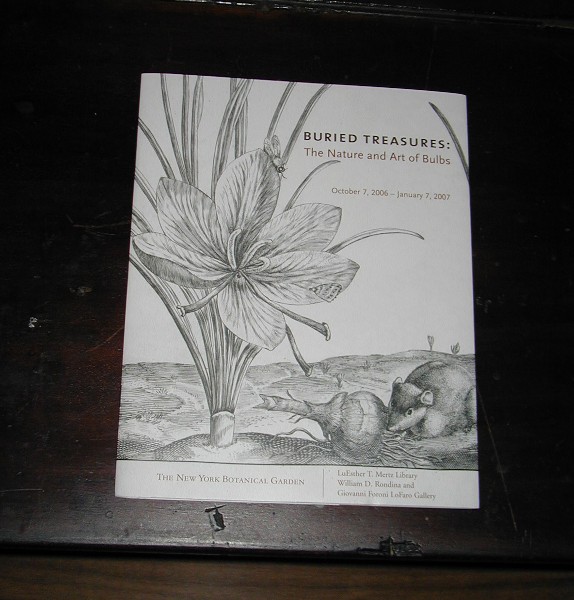
from the Hortus Floridus of Crispijn van de Passe, published in 1615.
The fold-out front and back inside covers show
by Daniel Wagner, published in Vienna in 1828-[1830]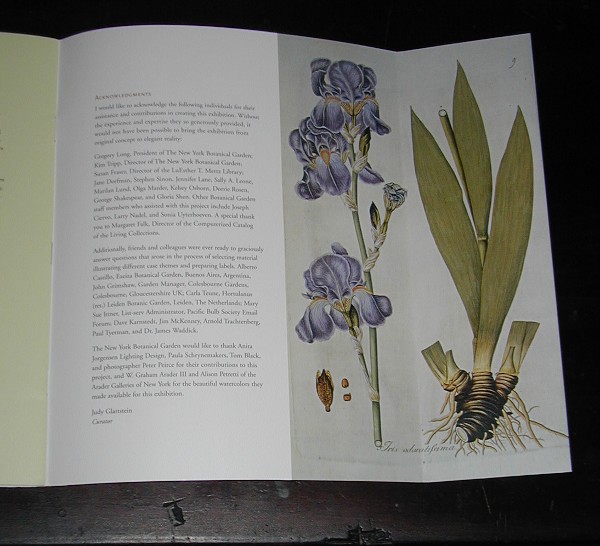
by Nikolaus Joseph Jacquin, published in Vienna between 1797 and 1817.

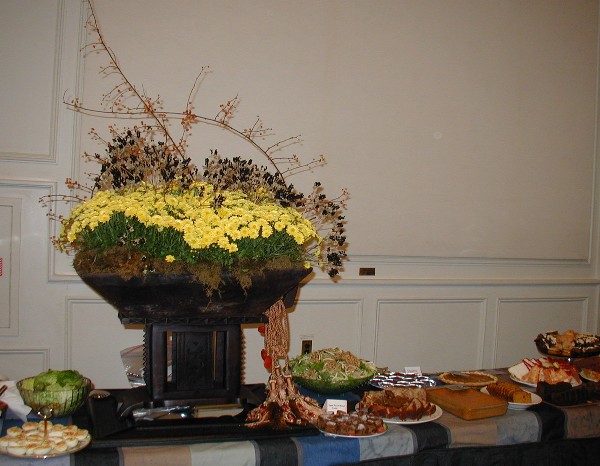
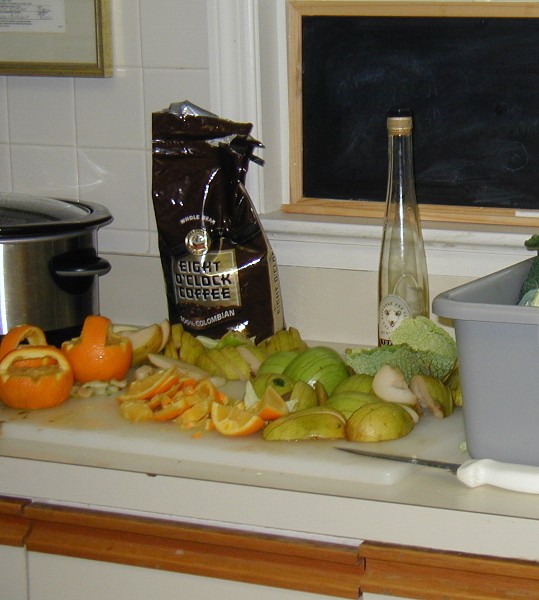
Tupelo honey was drizzled over a tart for that special, finishing touch.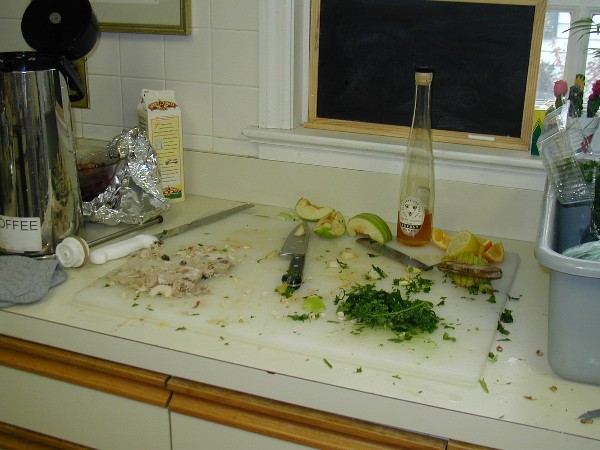
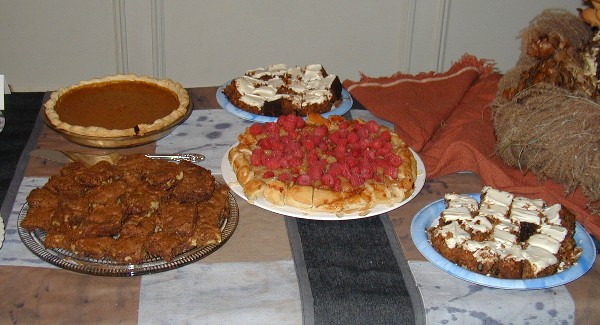

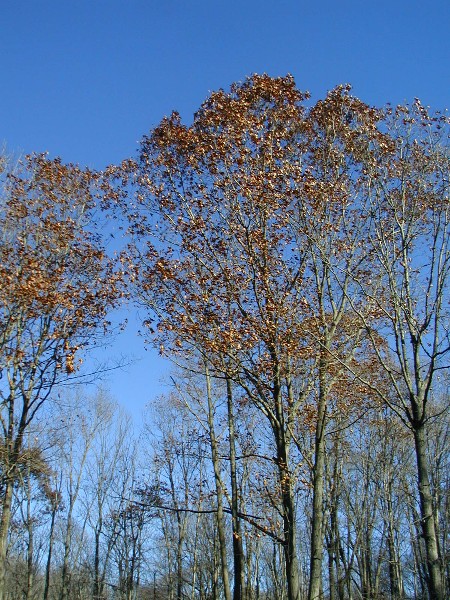

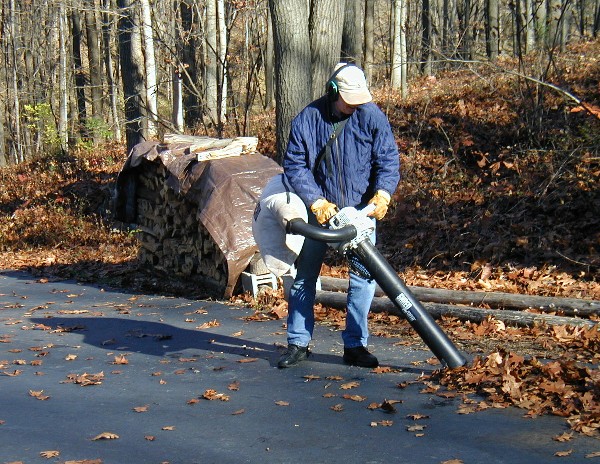


when compared to the fertilizer version.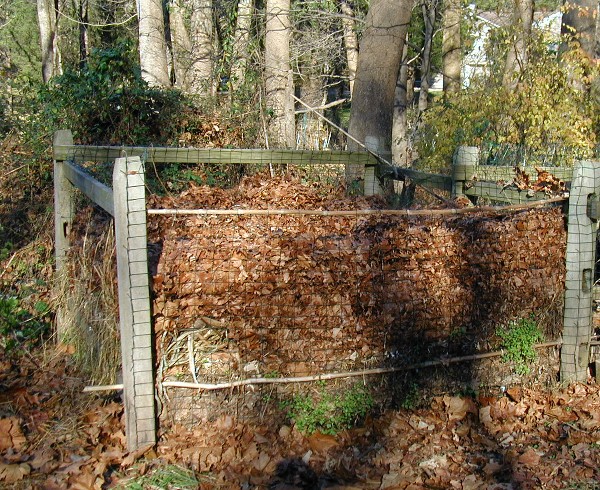
making room for more.

The frost-kissed leaves hang drab and brown, shivered to a pale imitation of their verdant summer version.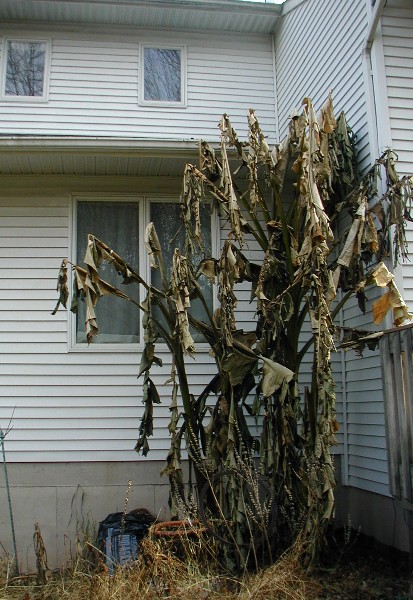
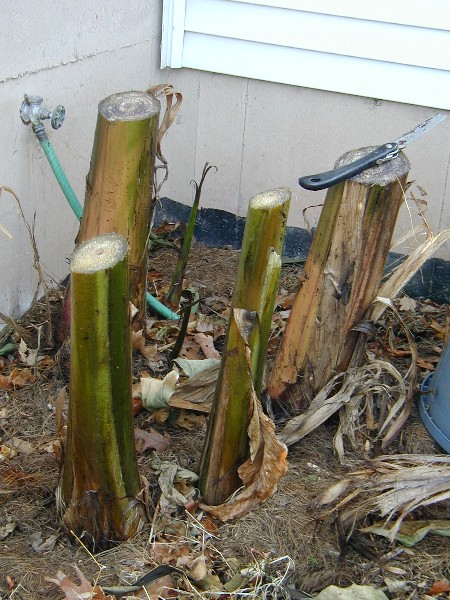

The pine needles settle, like pretzels in a bag, but not as compacted as if I pushed them down.
The can will be filled to the top.
Or, I lay the garbage can lid over the opening and tie it down to the handles, which - since the can is inverted - are next to the ground.


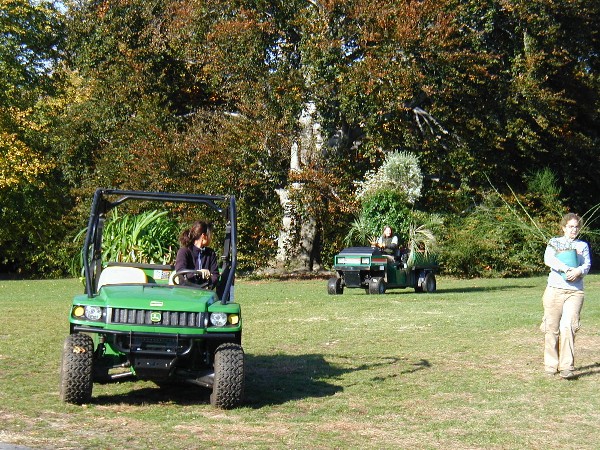
(The towering white fuzzy stuff in the second vehicle are flowers on a tender standard,
moving from a summer vacation in the aquatic garden area to shelter in its winter quarters.)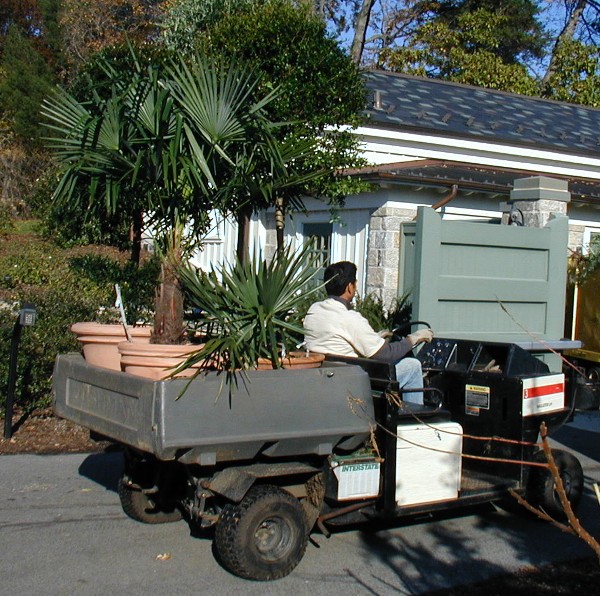

Even at Wave Hill they're faced with that familiar gardener's quandary -
"How the hell am I going to fit it all in?"